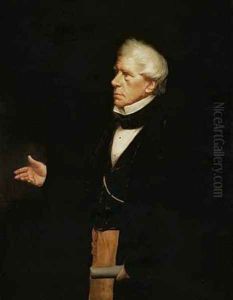J. Mayall Paintings
John Jabez Edwin Paisley Mayall, commonly known as J. Mayall, was a pioneering English photographer, engraver, and entrepreneur, who played a significant role in the early development of photographic processes and portraiture. Born on September 17, 1813, in Oldham, Lancashire, England, Mayall developed a diverse skill set that would later contribute to his success in the realm of photography.
In the 1840s, Mayall moved to the United States, where he worked as an engraver and lecturer on the subject of electricity. It was during this time that he developed an interest in the emerging field of photography. He returned to England in the early 1850s and established himself as a professional photographer in London. Mayall was one of the early adopters of the daguerreotype process, the first publicly available photographic process, which involved creating images on silvered copper plates.
Mayall's contributions to photography were not limited to his work behind the camera. He was also an innovator, constantly experimenting with new techniques and processes. By the 1860s, he had become one of the first photographers to use the collodion wet plate process, which significantly reduced exposure times and allowed for the creation of multiple prints from a single negative.
His work gained significant prominence when he published a series of cartes-de-visite photographs of the Royal Family, which were widely circulated and collected. These portraits helped to popularize the format and contributed to the phenomenon known as 'cardomania' in the 1860s, where collecting and trading small photographic visiting cards became a craze.
Mayall's studio became a hub for high society, and he photographed many notable figures of the Victorian era, including writers, scientists, and politicians. His portraits were known for their clarity and attention to detail, which set a new standard for photographic portraiture.
Despite his success, Mayall faced financial difficulties later in life, partly due to the fast-paced changes in photographic technology and the intense competition in the field. Nonetheless, his legacy as a pioneer of early photography remained intact.
J. Mayall passed away on March 6, 1901. His contributions to the art and technique of photography have been recognized by historians, and his works are held in various collections, including those of the National Portrait Gallery in London. Mayall's life and career were emblematic of the Victorian era's spirit of invention and its fascination with the emerging medium of photography.
